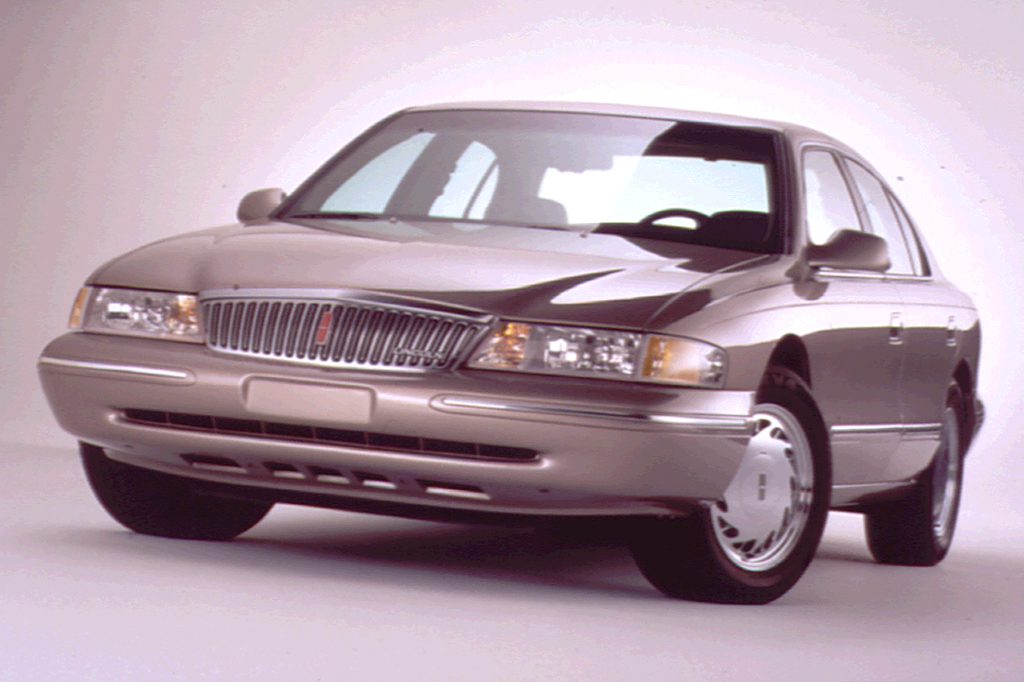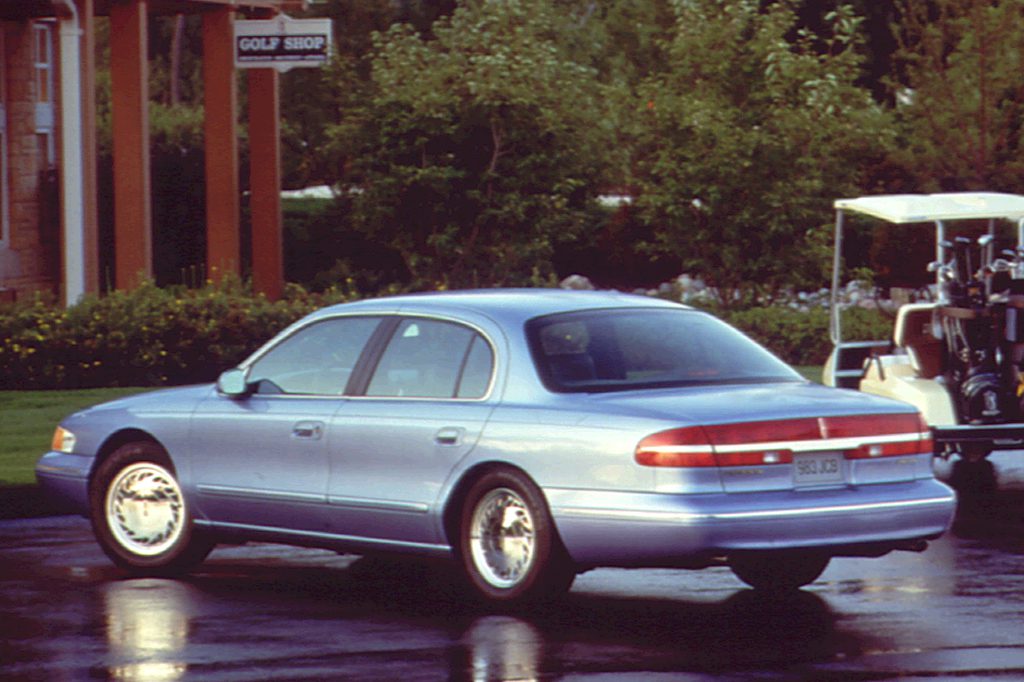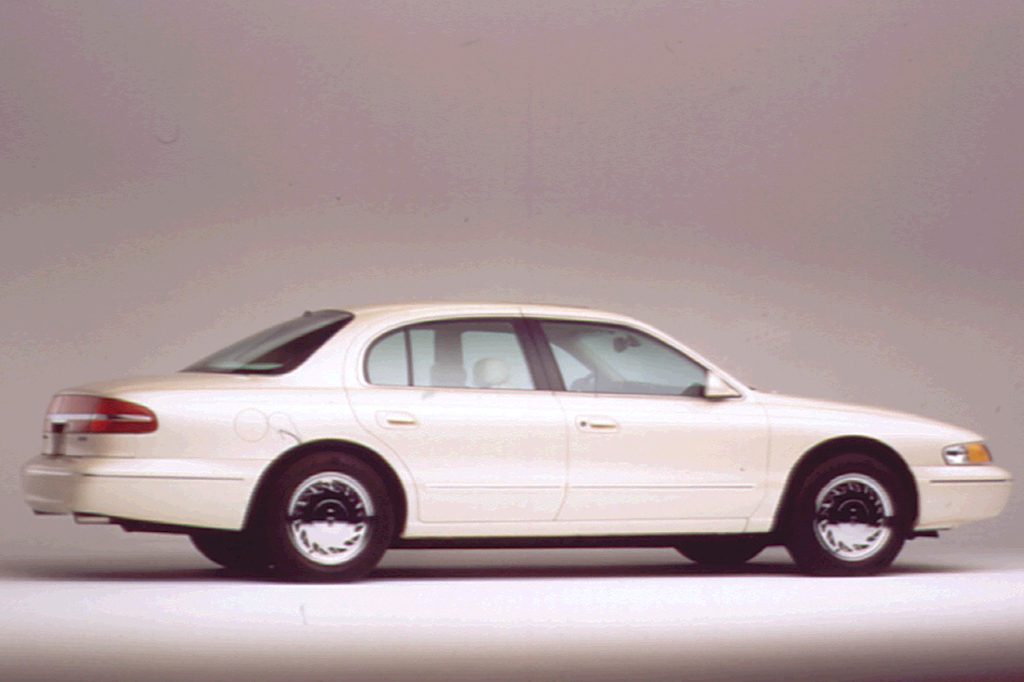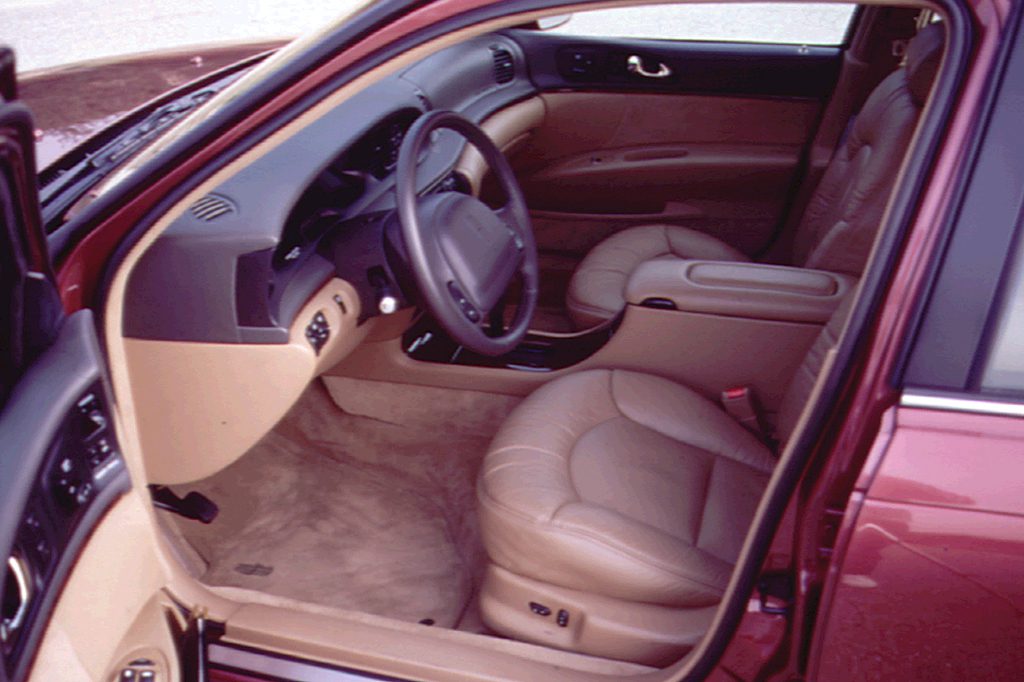| Premium midsize car; Built in USA |
|
|
| Good condition price range: $1,600 – $4,400* |

1996 Lincoln Continental

1995 Lincoln Continental

1995 Lincoln Continental

1995 Lincoln Continental interior

1995 Lincoln Continental interior
| Pros: |
|
| Cons: |
|
Lincoln evidently attempted to make the Continental both a sports sedan and a traditional luxury car. It’s not quite either, but worth a look anyway. Because sales have been tepid, used-car prices may be appealing.
Overview
Still front-wheel drive, a redesigned Continental 4-door sedan debuted late in 1994, featuring a new V8 engine with dual-overhead camshafts. Less-conservative, contemporary styling now resembled the Mark VIII coupe. Developing 260 horsepower, the 4.6-liter V8 drove a new electronic 4-speed automatic transmission. Standard equipment included dual airbags, antilock braking, automatic climate control, and an air-filtration system to trap dust and pollen. A redesigned instrument panel displayed virtual-image graphics. The driver could adjust ride quality and steering assist from dashboard buttons.
Yearly Updates
| 1996 Continental Continental’s formerly optional antitheft alarm became standard for 1996, and a Remote Emergency Satellite Cellular Unit (dubbed RESCU) became optional. It consisted of a voice-activated cellular phone, two emergency buttons mounted in the overhead console, plus a global-positioning satellite receiver in the car’s trunk. One button summoned roadside assistance; the other, police or medial assistance. |
| 1997 Continental Traction control (formerly optional) became standard. Lincoln abandoned the front air springs in favor of ordinary steel-coil springs. |
| 1998 Continental Continental gets a minor restyling but continues with the same mechanicals. It’s almost exactly the same size as the model it replaces, but new proportions give the ’98 Continental a shorter nose and longer tail. The restyled cabin has bird’s-eye maple trim and one inch less rear leg room. |
| 1999 Continental Changes for ’99 included standard front side airbags and a 15-horsepower boost, to 275, for the 4.6-liter engine. Additionally, a leather-and-wood steering wheel, 10-spoke alloy wheels, and a 2-tone leather interior were new options. |
| 2000 Continental Three new safety features went into 2000 models: rear child-seat anchors; a manual emergency release inside the trunk; and Belt Minder, a chime and warning light to encourage buckling up. |
| 2001 Continental All Lincoln’s got free regularly scheduled maintenance for the first three years/36,000 miles starting in 2001. Discontinued was RESCU, Lincoln’s satellite/cell-phone-based emergency assistance service. |
| 2002 Continental Lincoln announced that 2002 was to be Continental’s final model year and did not make public any plans for a direct replacement. Added midyear was a special-trim Collector’s Edition option for Driver Select models. |
